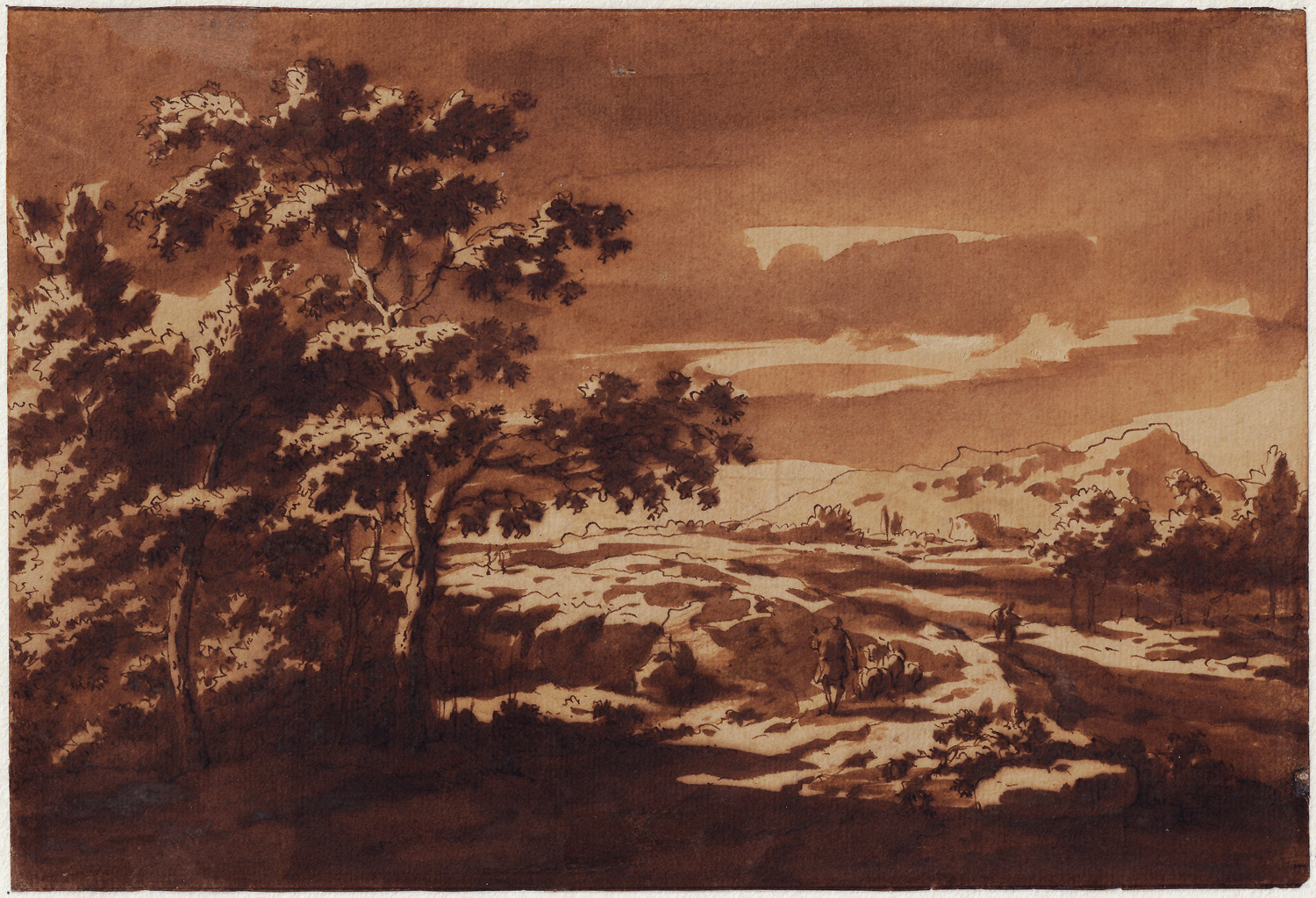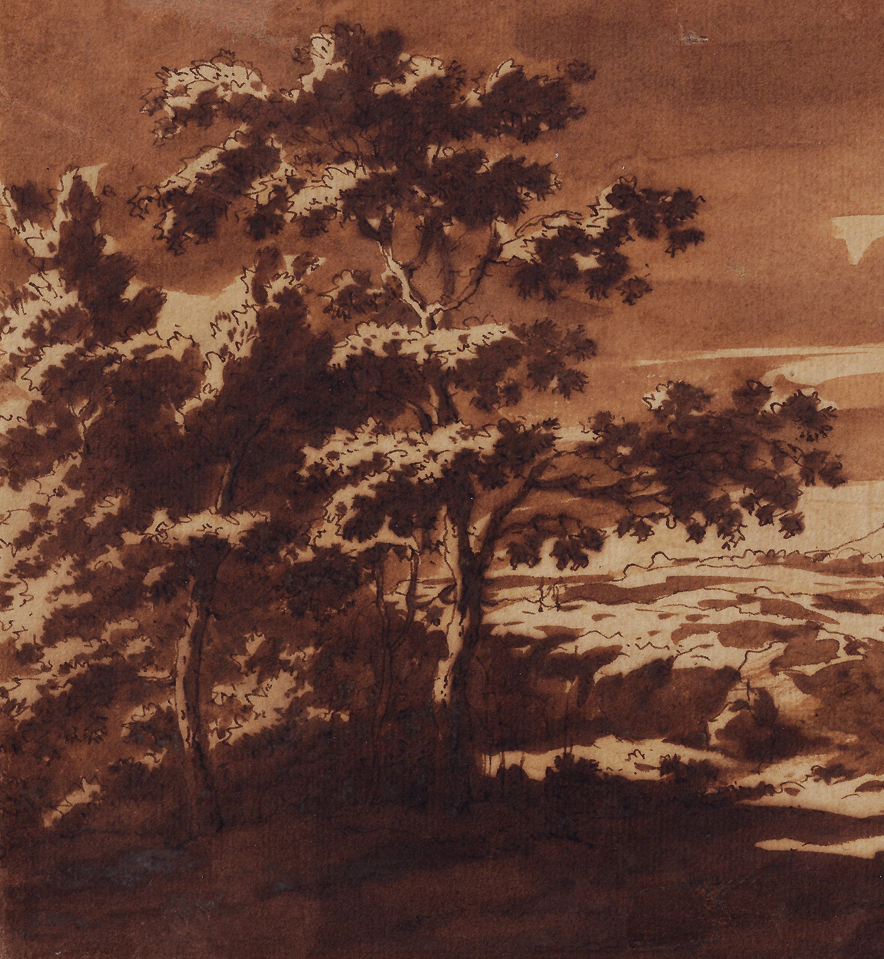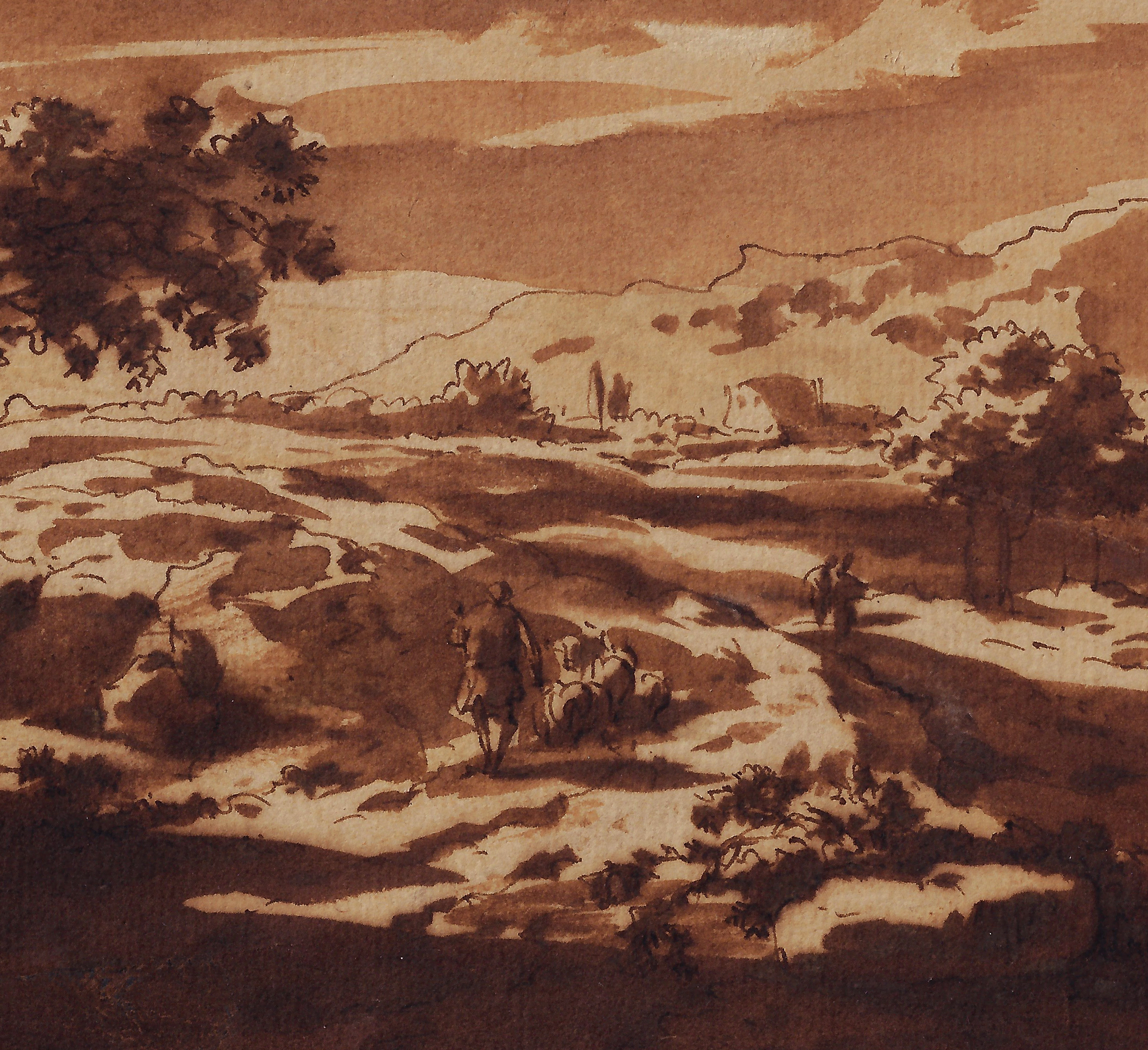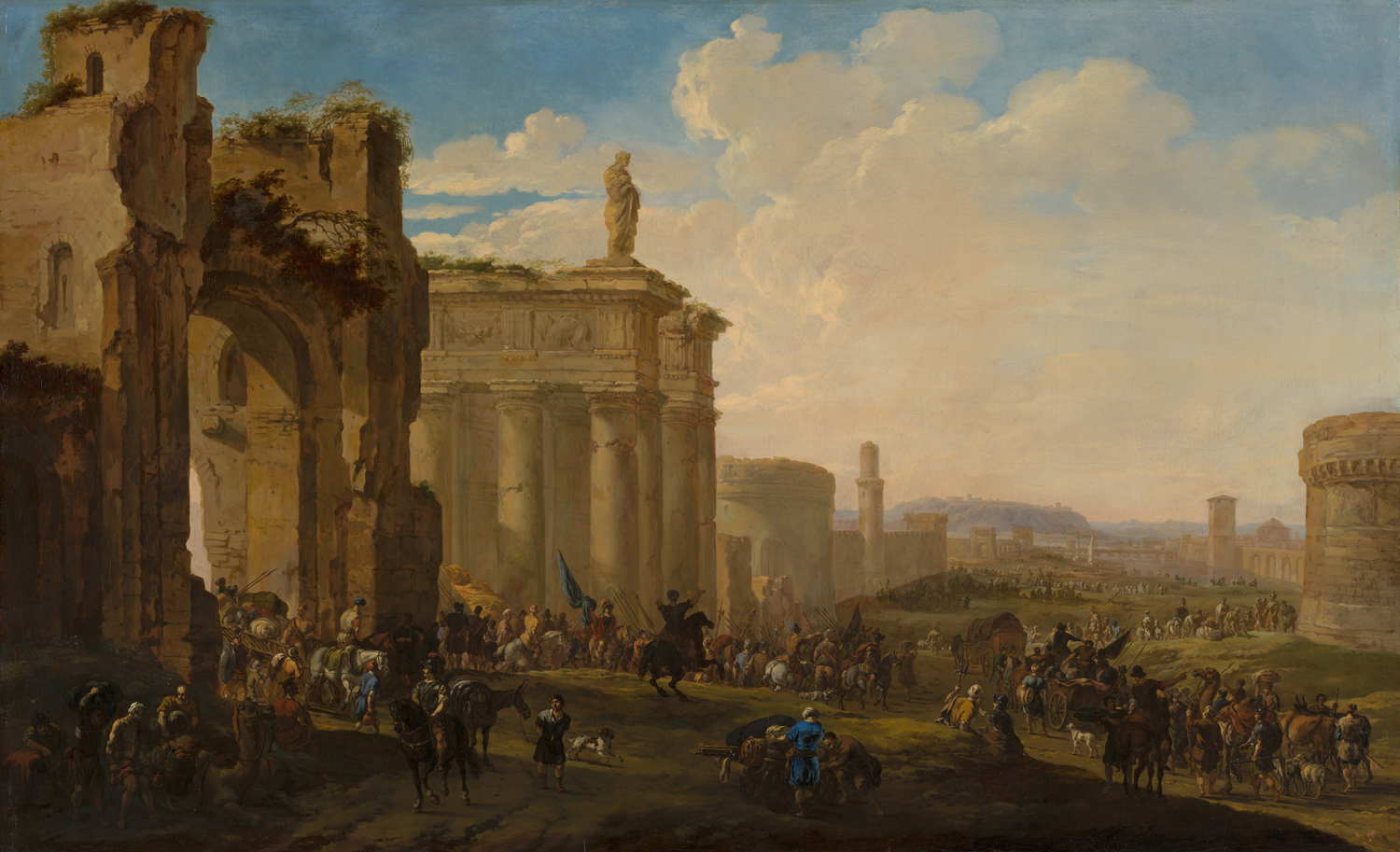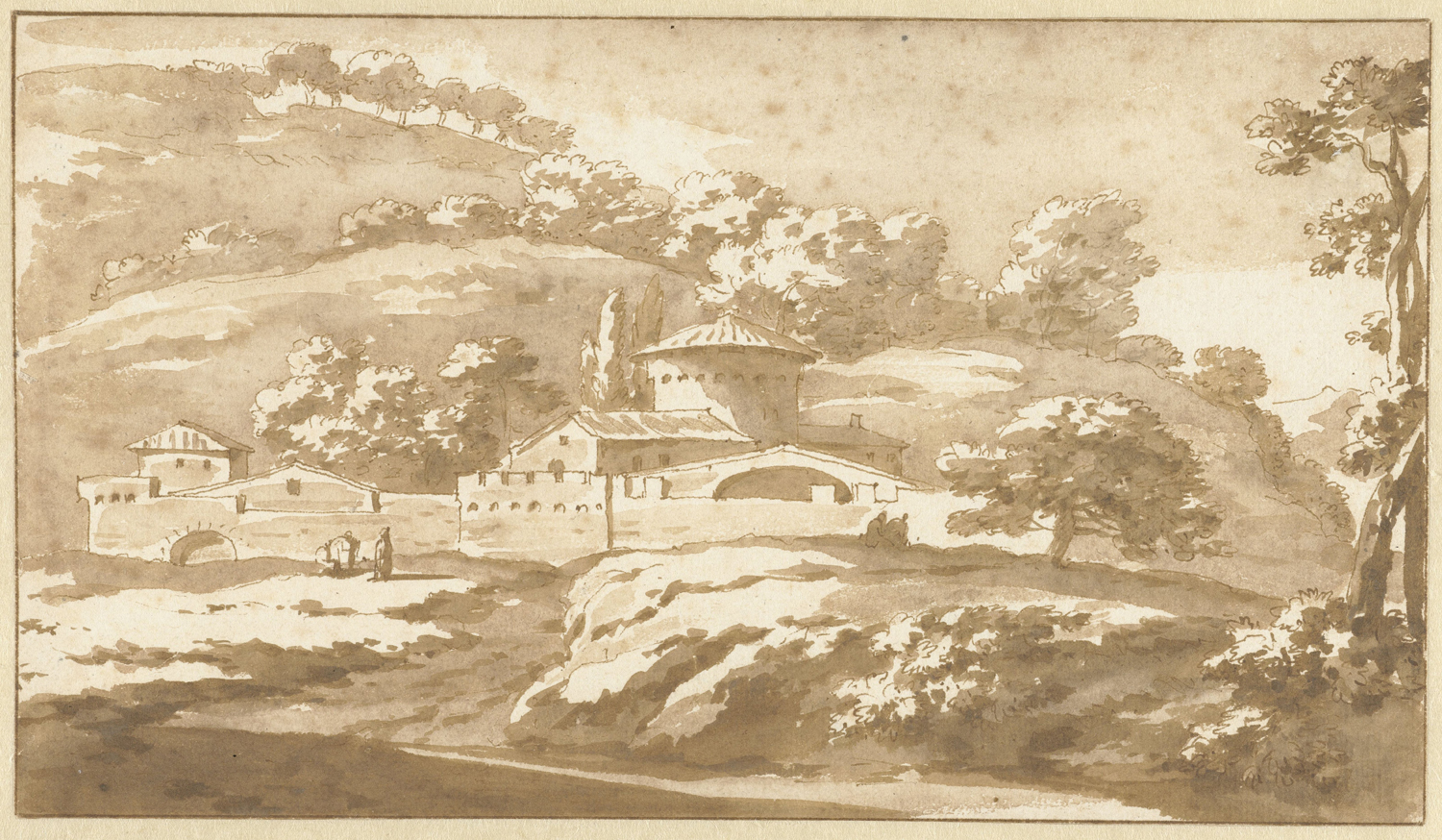JACOB VAN DER ULFT (Gorinchem 1627 – 1689 Noordwijk)
Jacob van der Ulft (Gorinchem 1627 – 1689 Noordwijk)
A Wooded Landscape with Figures and Sheep
Pen and brown ink, brown wash, partial brown ink framing lines, 155 x 227 mm (6.2 x 9 inch)
Provenance
~ Gerard Meijer (Lugt 5805)
~ Private collection, The Netherlands
***
Jacob van der Ulft was born in Gorinchem in 1627 as the son of the glass painter Abraham Albertsz van der Ulft and Neeske Reyniers.1 Jacob was taught the art of glass painting by his father, and married Helena Willemsdr de Wijn in 1643. An archival document of 1659 described him as a painter and architect. In addition to his artistic pursuits, he held public office in Gorinchem between 1660 and 1679, even serving as one of the town’s burgomasters. He executed several assignments for the town: in 1658 he was commissioned to make a number of heraldic drawings, and in the following year he made preparatory drawings to be engraved for the book De Historien der Vromen Martelaren. An account of Van der Ulft’s life was published in a description of the town of Dordrecht in 1677.2 In 1679 he fled Gorinchem on account of accusations of corruption, during which time he briefly stayed in The Hague. In 1683 he settled in Noordwijk, where he died in 1689. Among Van der Ulft’s pupils were Peeter Bolckman and Pieter Verhoek.
Van der Ulft is best known for his paintings and drawings of Mediterranean landscapes. According to some biographers, Van der Ulft travelled to Rome around 1650 and was a member of the Bentveughels. Arnold van Houbraken however in his Groote Schouburgh of 1718–21 claimed that Van der Ulft never set foot in Italy and his Italian views were based on drawings and prints, and this appears to have been the case. A collection of 58 ‘views from life in Italy’ by Van der Ulft, preserved in the Fondation Custiodia in Paris, could have been copied from examples by other artists.3 The powerful use of sepia washes and the strong effects of chiaroscuro are remiscent of the drawings of Jan de Bisschop, called Episcopius (1628–1671), whose oeuvre Van der Ulft is likely to have known.
Paintings by Van der Ulft are quite rare and can be found in some of the world’s leading museums, including the Rijksmuseum, Amsterdam, the Frans Hals Museum, Haarlem, the Hermitage, St-Petersburg and the Mauritshuis, The Hague, which holds his Italianate Landscape with an Advancing Army of 1671 (fig.).4 The artist was an active draughtsman, and a considerable number of drawings by him has survived, including works in the Herzog Anton Ulrich Museum in Braunschweig, the Teylers Museum, Haarlem, the Pushkin Museum, Moscow, the Huntingdon Library, San Marino and the Weimarar Klassik und Kunstsammlungen, Weimar. Our drawing has particularly strong washes and can be compared to Van der Ulft’s Italianate Landscape in the Rijksprentenkabinet (fig.).5
Although Burgomaster Van der Ulft is likely to have drawn for his own amusement, something like an amateur, ‘painterly’ drawings such as this sheet were also eagerly acquired by contemporary collectors of ‘papierconst’.
SOLD
1. For the artist, see Charles Dumas, ‘Een reeks kasteeltekeningen door Jacob van der Ulft (1621-1689)’, Delineavit et Sculpsit 42 (December 2017), pp. 27-79 and Fieke Tissink and H.F. de Wit, Gorcumse schilders in de Gouden Eeuw, Gorinchem 1987, pp. 32–58.
2. Matthys Balen, Beschryvinge der stad Dordrecht (…), Dordrecht 1677, vol. 1, p. 1350.
3. Inv. no. 6481; Peter Schatborn a.o., Tekenen van warmte: 17de-eeuwse tekenaars in Italië, Zwolle 2001, p. 199.
4. Signed and dated 1671, oil on canvas, 81.8 x 133.3 cm, inv. no. 196, Mauritshuis, illustrated general catalogue, The Hague 1977, p. 242.
5. Pen and brown ink, brown wash, 119 x 208 mm, inv. no. RP-T-1900-A-4428.
